After having completed the first step of becoming a yachtmaster – the German Sportbootführerschein See (SBF), equivalence to the RYA Yachtmaster though not as complex (read full article here) – I was keen on quickly going on to educate myself in sailing school for the upcoming season. Because of the fact that there aren´t any sailing classes in winter time here in Hamburg, I decided to go ahead for the Short Radio Communication-Certificate, SRC. What a coincidence, my sailing school had a tempting offer: An SRC-Certification with free entry to the Hanseboot fair, which I couldn´t resist (read full article on the Hanseboot fair here).
UBI/ATIS, SRC and LRC?
When posting my decision via twitter somebody was asking why the “short” one instead of the “long” one. Well. The Short Range Communication-Certificate is mandatory if a yacht is equipped with a VHF/DSC-capable radio transceiver and if the skipper wants to participate at the GMDSS, the Global Maritime Distress and Safety System. Whilst VHF-radio signals, depending on many factors, have an average range of 20 to 30 miles maximum, a gapless coverage of GMDSS can only be granted in coastal areas, the so-called A1-areas. And as simple as that: That´s the area I am going to sail in most of the time.
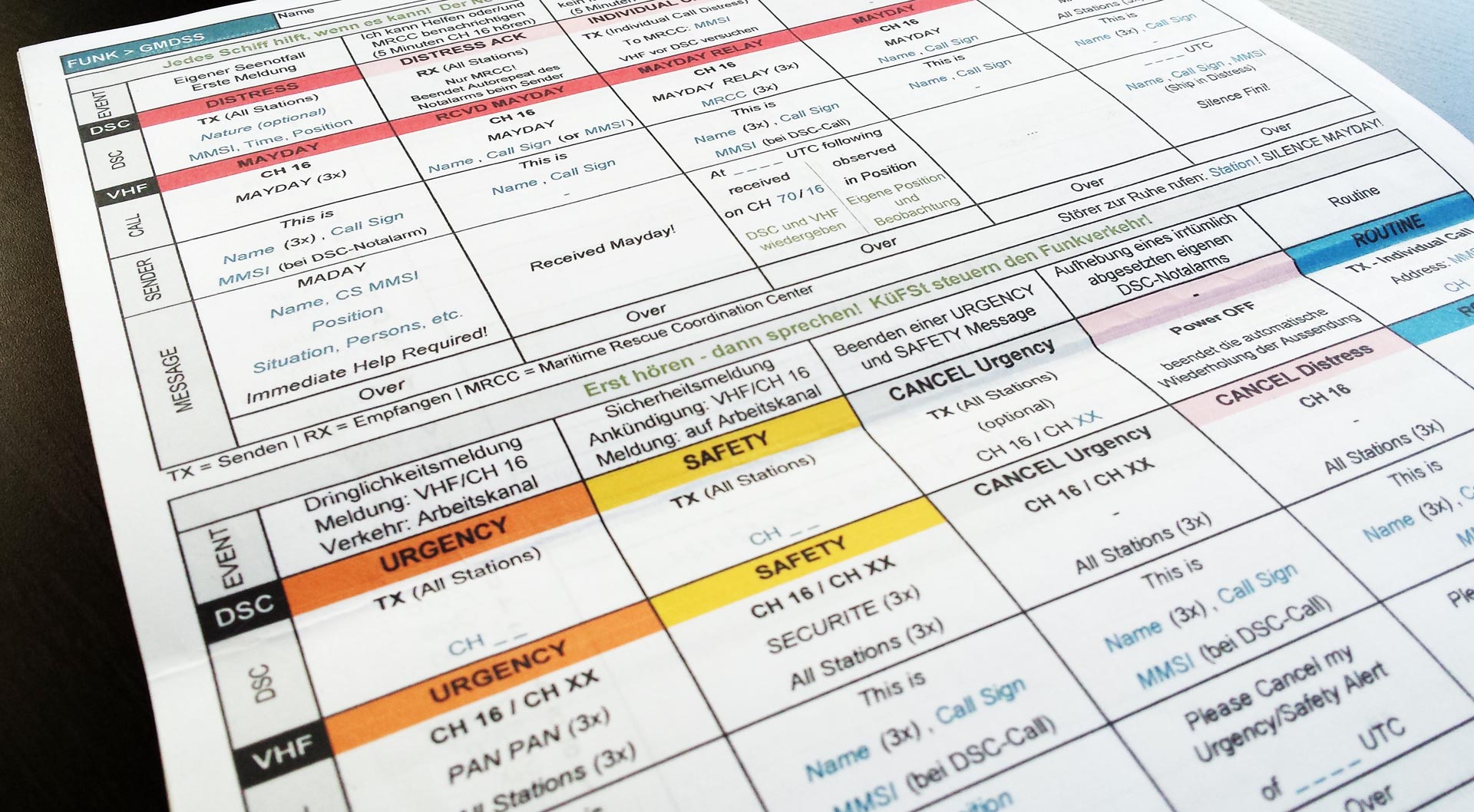
LRC – the Long Range Communication-Certificate – is meant for radio equipment a skipper will use when out of the VHF-range of the Maritime Rescue Coordination Centers or MRCCs, say, out of A1-areas. The LRC includes all SRC-relevant contents for utilization of VHF- and DSC-equipment, distress- and priority-procedures as well. It furthermore includes the technical and procedural training on MF and HF-transceivers as well as SSB- and satellite communication such as Inmarsat. That means, the LRC is indeed the more complex and complete certificate, but at the same time from my point of view only needed for real blue water sailing and for skippers intending to offer commercial services. In the end I do not have any of the LRC-specific equipment on board nor intending to have it in the near future.
The UBI-Certificate a German proprietary certification is of no interest for me since I won´t travel on rivers and other inland waters. Even if I find the ATIS (Automatic Transponder Identification System) to be used by European vessels travelling our inland waters interesting from a technical standpoint, that certificate won´t make sense for me at all.
So, just the SRC this time, since I won´t attend the ARC in the near future.
The SRC-Certificate is mandatory.
According to German law, if there is a VHF/DSC-capable radio on board, the skipper is required to hold an SRC-Certificate at least. SY OLIVIA has such equipment so that attending class was no question for me. In the end, knowing how to use the transceiver for the various purposes other than distress alerts is more than good seamanship. Besides, when doing my A-levels I was active as radio operator on the citizen band – call sign GREYHOUND (puberty …) – and attending an extracurricular school-group in ham radio, practicing packet radio to the then still active space station MIR. Memories …
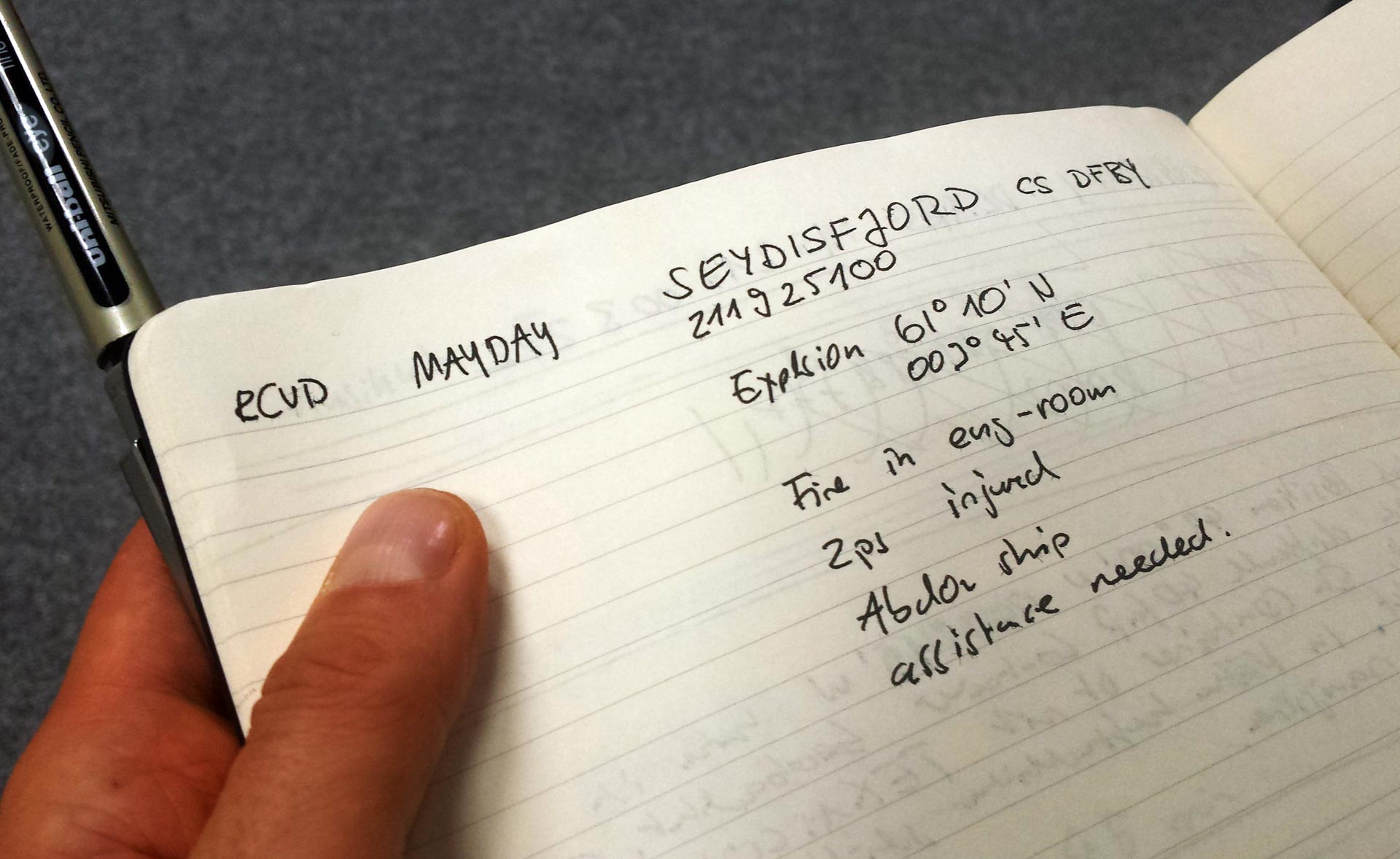
Knowing how to utilize VHF/DSC is a question of safety over all: “In a case of distress, when you and the crew face disaster at sea, it´s centuries of bloodshed and tragedy which have developed into formal regulations”, said Hilmar, our SRC-teacher in class, “culminating in the GMDSS-procedures which ensure the most effective way of communicating, acknowledging and relaying distress to a master coordinator.” SRC is overall a question of safety and therefore mandatory for all skippers out there.
My SRC-class at the Hanseboot-fair: 13 hours at the radio.
I have been very lucky to attend the class, which was sold out well in advance. It was only one attendee getting sick granting me my place. Too short notice – I haven’t been able to work my way through all of the 180 different questions so that I decided not to book the examination as well but class only. Too risky for a poorly prepared like me. But anyway, getting all the practical education proofed very effective on the one hand – very attractive on the other hand: Sitting on the second floor in front of a glass-wall, we were able to look over the whole hall filled with all the dream yachts, having the Hallberg-Rassy 40 directly underneath our windows.
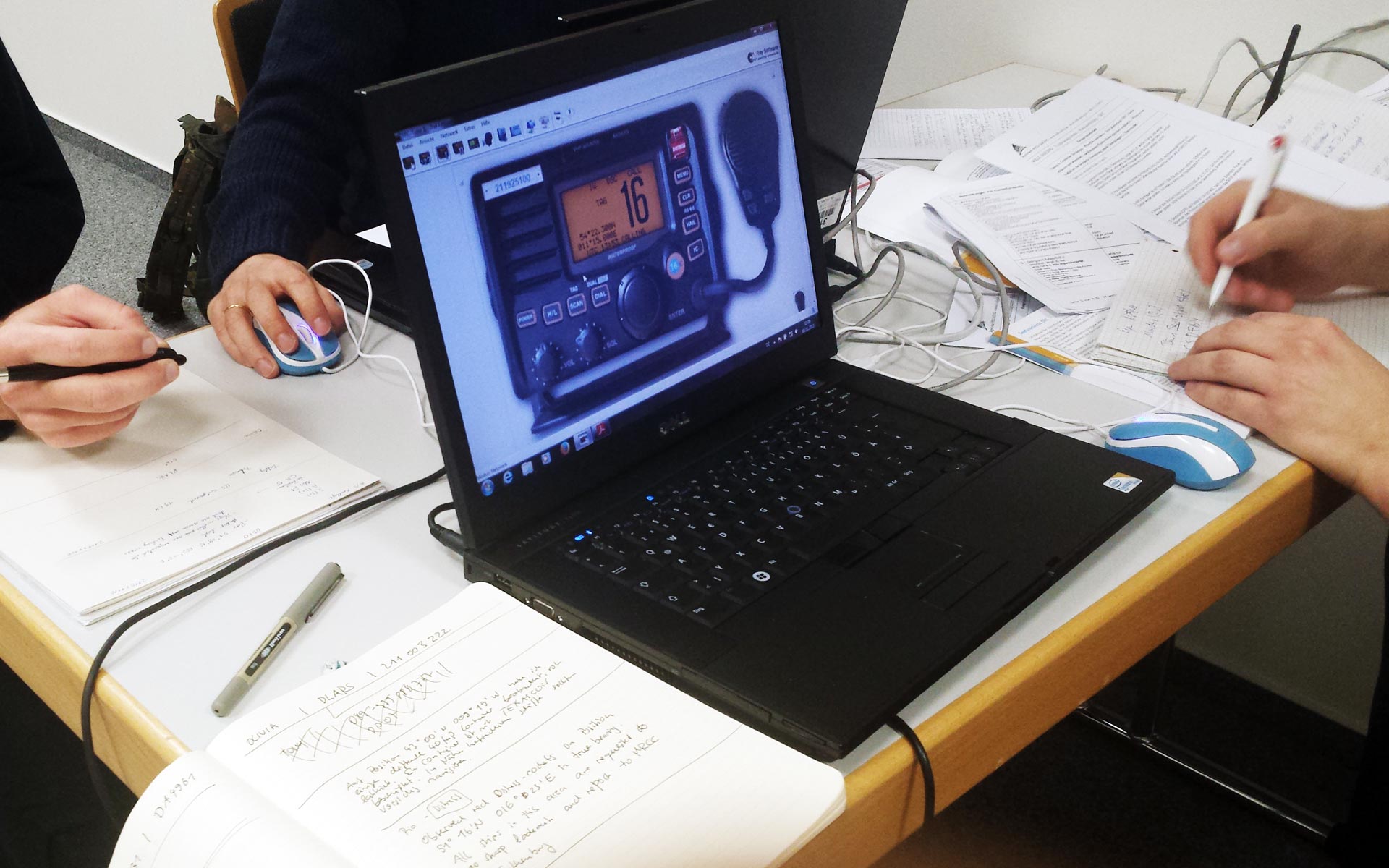
All in all we were 17 pupils and Hilmar, an experienced instructor and skipper by himself. As well as during my SBF-class, we´ve had all kinds of people attending the course: The young ambitious regatta-sailor, a couple keen on going on their circumnavigation-project, some spare time fishermen and people like myself, freshmen, lubbers. Even a Luftwaffe-Pilot, himself holding all kinds of NATO certifications and it was of great laughter for us all when he told us German authorities wouldn´t accept his military radio certificates. The whole course was set to train us SRC-exam ready in three days, 13 hours all in all. First day – basics.
A question of safety.
As I mentioned it, knowing how to utilize a radio is furthermost a question of your personal safety and that of your ship and crew and of the other´s safety as well as you might be the one able to comply in another skipper´s distress. So right from the start it was the IMO-scheme of when to do what in case of disaster at sea. Receiving a distress alert, proving the ability to help, if positive, radioing a RCVD Mayday to the shipwrecked and a relay to the MRCC. “You must comply to the scheme to 100 per cent!”, Hilmar advised: “As all of the participants are trained on that particular procedure and are expecting you – as everyone else – to behave compliant.” Besides, the exam would be messed if not …
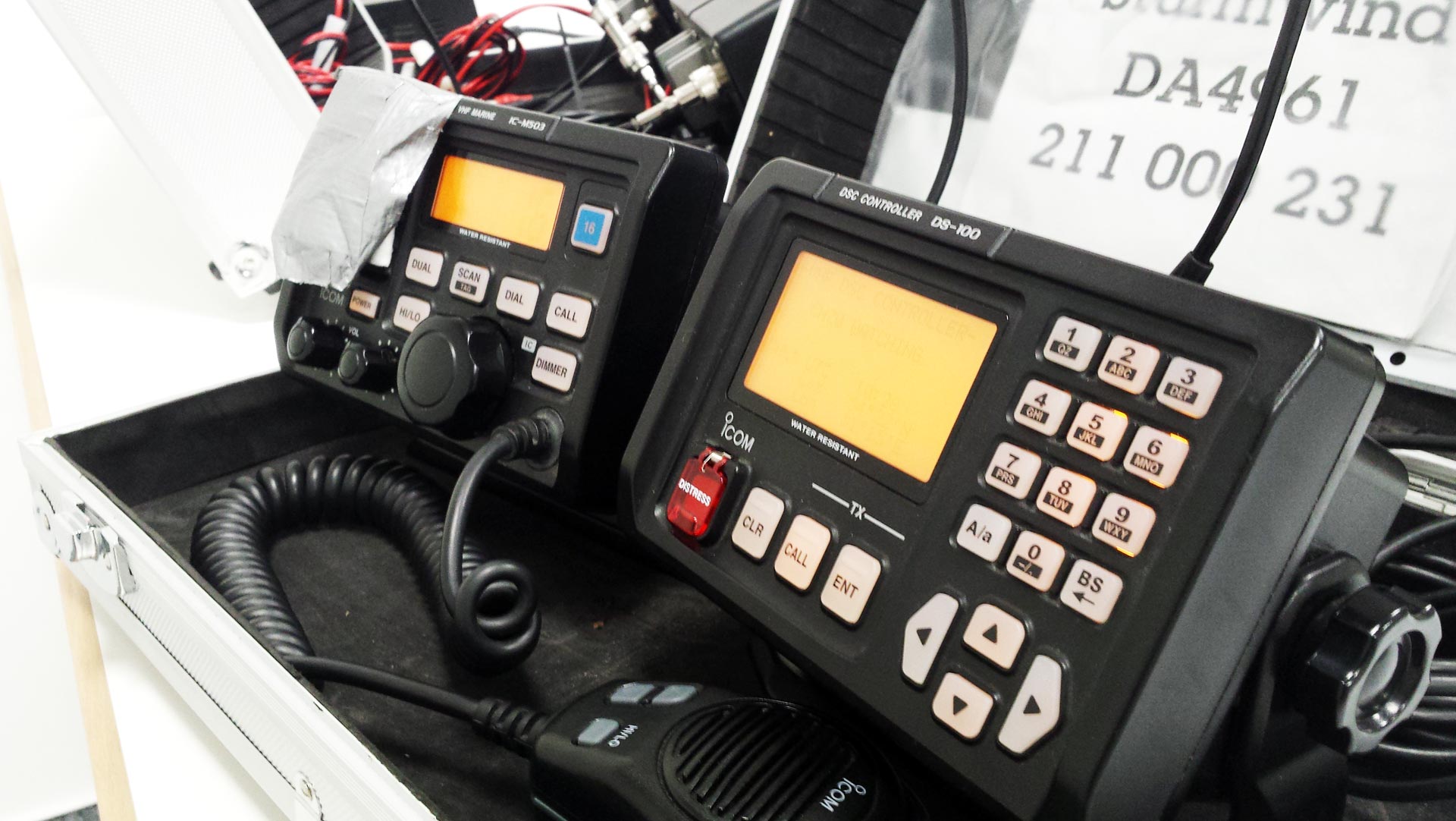
We trained how to set up a distress DSC-alert, how to transmit the alert via VHF on channel 16 word by word so intensively that back home and in bed I instantly dreamt wildly of myself on board a burning, leaking, sinking, previously pirate attacked vessel adrift requesting immediate help …
Next day promised to be a lot tougher since we were scheduled to train for seven full hours in front of the equipment …
Securité, securité, Pan pan and Mayday.
Just in time, 10 o´clock in the morning – or, as we´ve learnt, 9 o´clock UTC – we started to go through one distress after another. Two of us manning one transceiver, two transceivers being interconnected to each other, rotating between four different set-ups of equipment it was all but a smooth day in class. Hilmar handed out sheets of paper with situations we´d had to simulate either distress or MRCC.
Reading the situation, first thing was to decide if it was just a safety-priority, an urgent message or the distress call. All the time the DSC alerts (hell, that was loud!) went off at our stations, creating a very real situation of stress. I was able to observe my classmates turn red, shaking hands and voices on the mike. The first times we made a lot of mistakes, ridiculed the IMO-scheme, forgot identifications, positions or – classic – the “over”. Sometimes it was the call sign missing, sometimes the MMSI. “First thing you do when receiving the DSC-alert,” Hilmar told all the time: “Write down all information and wait on 16 for the message.” Said and done: Listening to the message, it was far easier to just compare and complete the DSC-data with what we´ve heard than to try to write down the whole message.
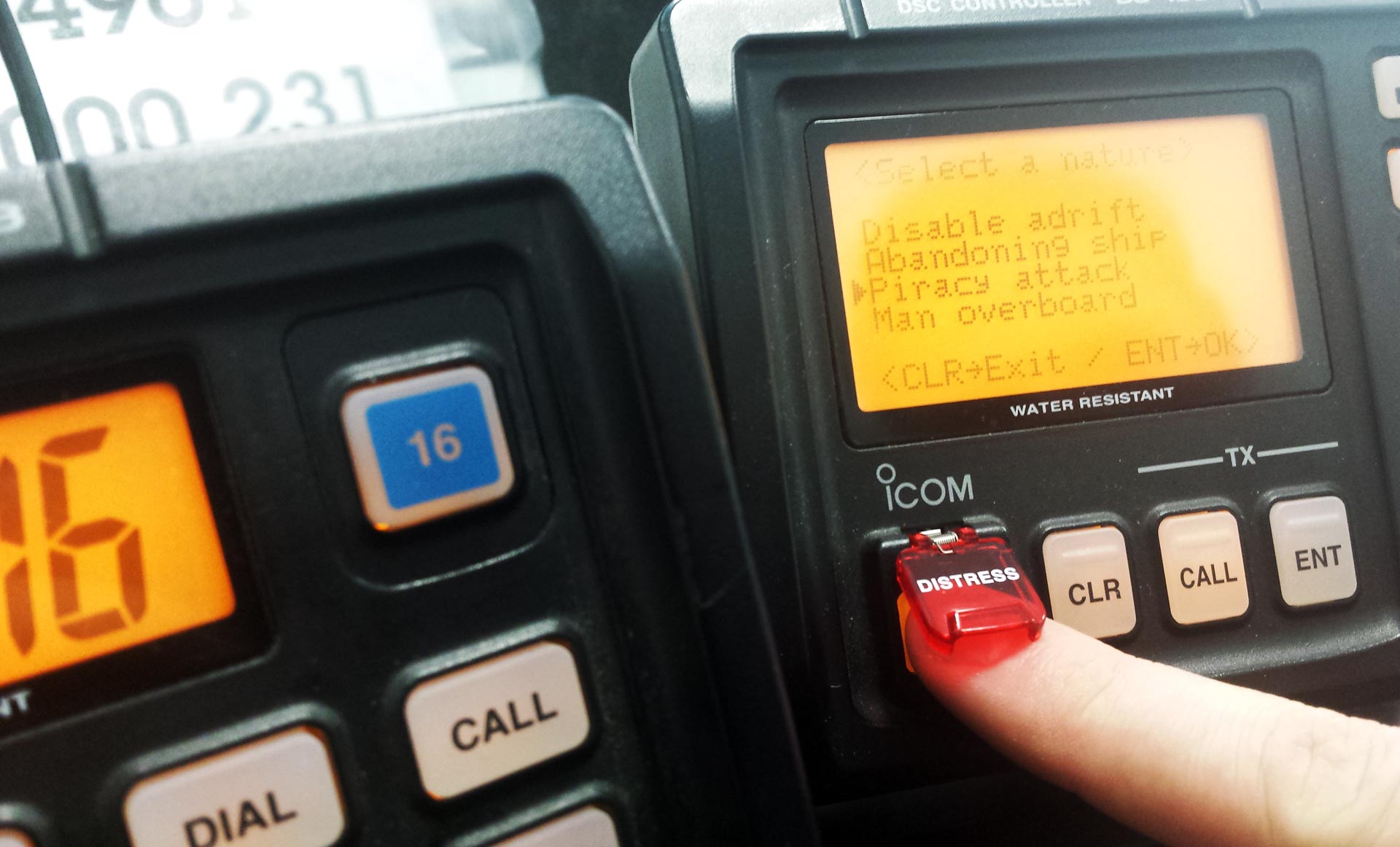
“Don´t hustle, stay cool”, he advised: “Just take your notes. If you are not able to write everything – just in real life – grab the mike and just ask.” Seven hours hard work in the stations, we got more and more safe on the topic. Receiving distress calls, acknowledging, relaying and ending Maydays, Pan pans or Securetés turned to routine, we even got used to the different kinds of transceivers Hilmar had set up for us.
State-of-the-art equipment with DSC and AIS?
Which brings me to the technical side of the whole thing. DSC on channel 70 is definitely a smart thing. Being able to send a distress in a matter of seconds with automatically provided exact positions and timecode – assuming GPS is working and feeding data to the controller – and of course the continuous transmitting of distress-alerts until ACK from MRCC is both fascinating and creating a sense of safety in itself. Modern radio equipment (DSC is not so modern anymore since it has been introduced around the mid 80´s) nowadays is not only connected to GPS but has also integrated AIS-features. But I thought all the time … what if?
What if my yacht was really in a distress? Would I be able to send a DSC and then switch to channel 16 to make my announcement? What if I´d had to abandon the ship – would I sit down to push still a lot of buttons just to send the equivalent of an SMS? Wouldn´t I rather grab the mike to scream out my misery? Better not to find out, eh?
An old fashioned ELNA RT2048 onboard SY OLIVIA.
Unfortunately the Hanseboot fair hadn´t really had so much exhibitors showing radio equipment. I would have liked to go to their stands after the class to talk to them, to check for the latest technology and to touch the real life equipment out there for purchase rather after being trained on not-so-modern-anymore stuff. But I´ll keep that in mind for the upcoming Boot fair in Düsseldorf or my next shopping tour in one of our big marine-stores. Back at home I went to the big locker where I store the equipment of my own yacht. I looked for the radio.
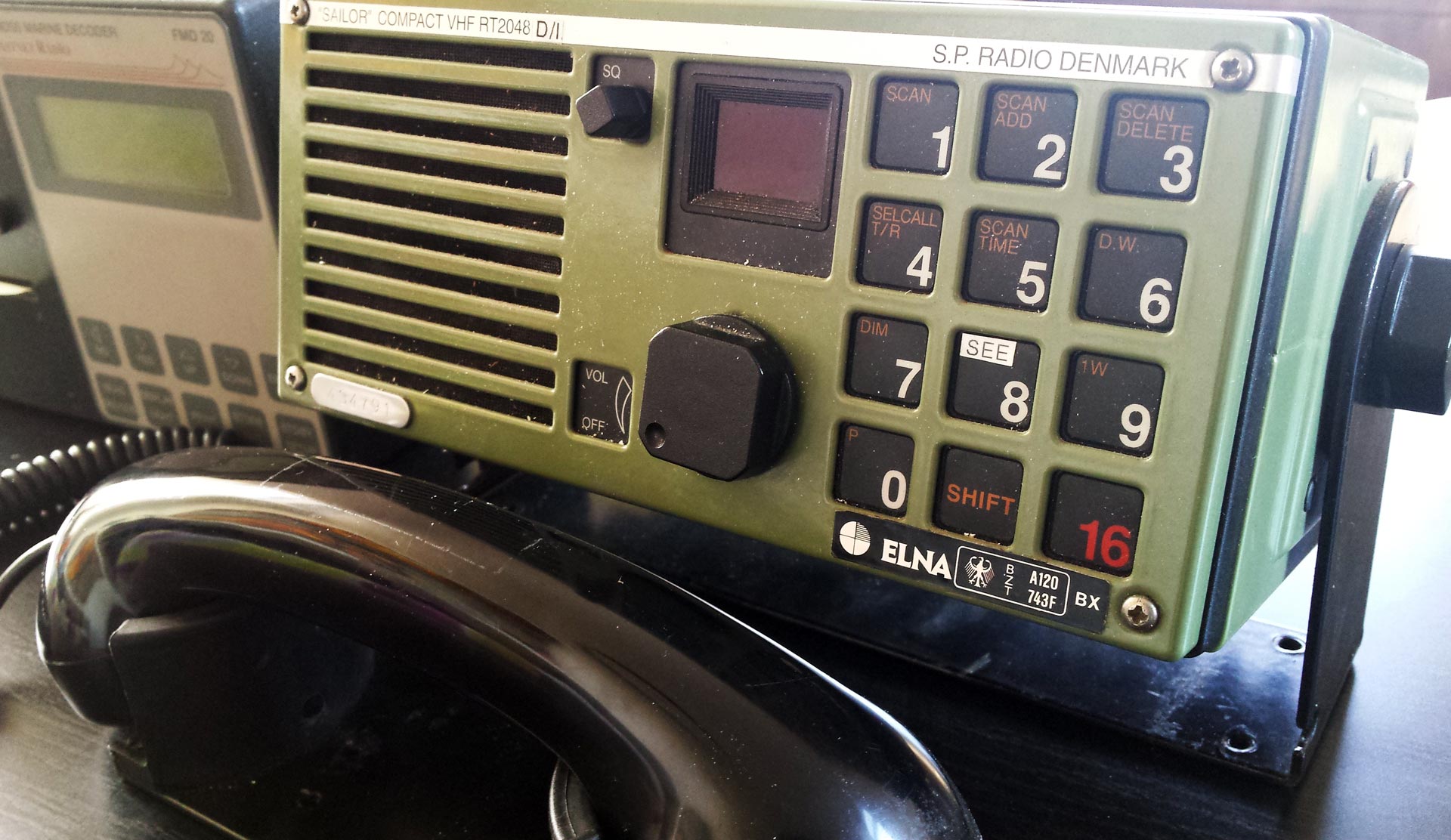
There it was, a bit smeary, a bit dusty but still working well, as I knew from our test trial and the three-stage transfer cruise (read the report of the first stage here). It´s a Danish built ELNA RT2048 “Sailor” VHF-transceiver. An old school gadget, outfitted with an anachronistic looking telefoneearphone. Asking Hilmar what he would buy if he´d be me, his answer came as quick as convinced: “That´s a nice piece of tech. If it works fine and fits the ship – why not keeping it? DSC or not is a personal decision from my point of view.” And he spoke right from my heart. Looking at the ELNA it´s the same with looking at my 40 year old ship: She is a beauty. So is my radio.
I´m still wondering putting the RT2048 on eBay and getting an up-to-date radio or not. We´ll see.
My next steps for becoming a skilled Yachtmaster.
Right now I will spend the next weeks with learning the theoretical part of the SRC. I´ll then go back to Hilmar to have two or three hours of refreshing my practical skills to do the exam for my own certification as soon as possible. Then I am one step closer to the real yachtmaster, even if these were just the non-practical skills.
Registering my radio and filing my ship in the official registry would be the next steps. And with a close eye on 2016 it´s finally the sailing that is on my list as well. Sailing. Reminds me of a flyer I got into my hands on the Hanseboot: There is a sailing school offering a heavy water training-cruise from Hamburg to the Island of Helgoland of four days. Starting December 30st it´s New Year´s Eve at the helm of a Gib Sea 43 in worst North Sea conditions … man, that would definitely be an unforgettable trip.
But that is definetely something I cannot seriously ask my wife for …
What do you think of the SRC/LRC certificate? What are your stories connected to radio conversation? I am looking forward to your comments.
